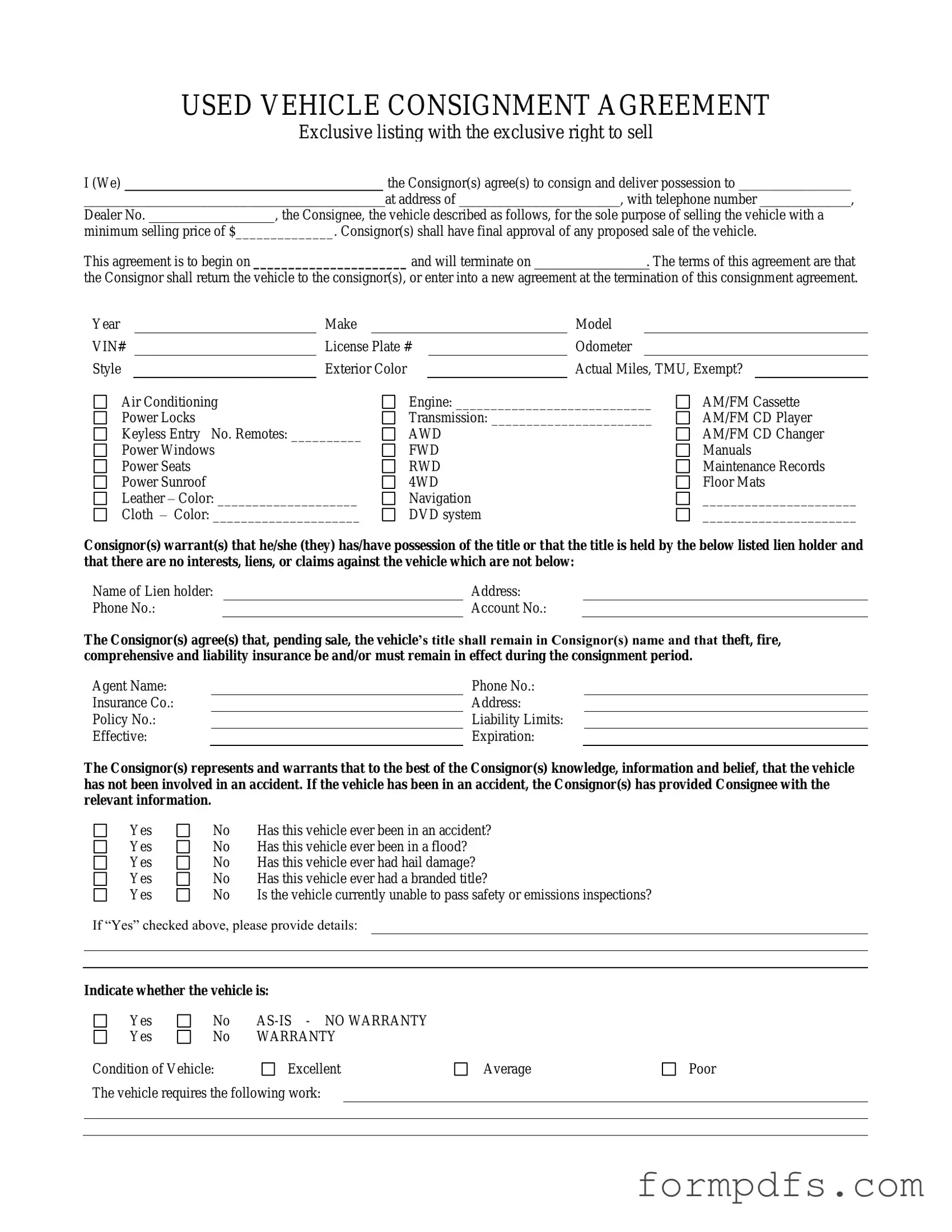What is a Car Consignment Form?
A Car Consignment Form is a legal document that outlines the agreement between a vehicle owner (the Consignor) and a dealer or individual (the Consignee) who will sell the vehicle on behalf of the owner. This form specifies the terms of the consignment, including the selling price, duration of the agreement, and responsibilities of both parties.
What information do I need to provide on the form?
You will need to provide various details about the vehicle, including its year, make, model, VIN, license plate number, and odometer reading. Additionally, you will need to disclose any liens on the vehicle, its condition, and whether it has been involved in any accidents. Personal information, such as your name, address, and contact details, will also be required.
How does the selling process work?
Once you complete the Car Consignment Form and hand over the vehicle to the Consignee, they will market and sell the vehicle for you. The Consignee has the exclusive right to sell the vehicle at the agreed minimum price. You retain the final say on any sale offers. If the vehicle sells, the Consignee will deduct their commission and any agreed-upon costs before paying you the remaining balance.
What happens if my vehicle doesn’t sell?
If your vehicle remains unsold by the end of the consignment period, you have a couple of options. You can either choose to extend the consignment agreement or take the vehicle back. However, you may be responsible for any repair costs incurred during the consignment period, and you should be prepared to pay for those before the vehicle is returned to you.
Are there any fees involved?
Yes, there are several fees you may encounter. The Consignee will typically charge a commission based on the sale price of the vehicle. Additional costs may include advertising fees, safety inspections, and detailing services. It’s important to review these costs in the agreement to understand your financial obligations fully.
What if I want to remove my vehicle from consignment?
If you decide to remove your vehicle from the Consignee’s premises, you must provide a minimum notice period as specified in the agreement. The vehicle can be picked up during designated hours. Be aware that you will need to settle any outstanding fees related to advertising, repairs, or inspections before the vehicle is released to you.
What protections do I have as a Consignor?
As a Consignor, you are protected by the terms outlined in the consignment agreement. This includes the right to approve any sale and the requirement that the Consignee maintains insurance on the vehicle during the consignment period. Additionally, the agreement includes indemnification clauses that protect you from claims related to the vehicle while it is in the Consignee's possession.
